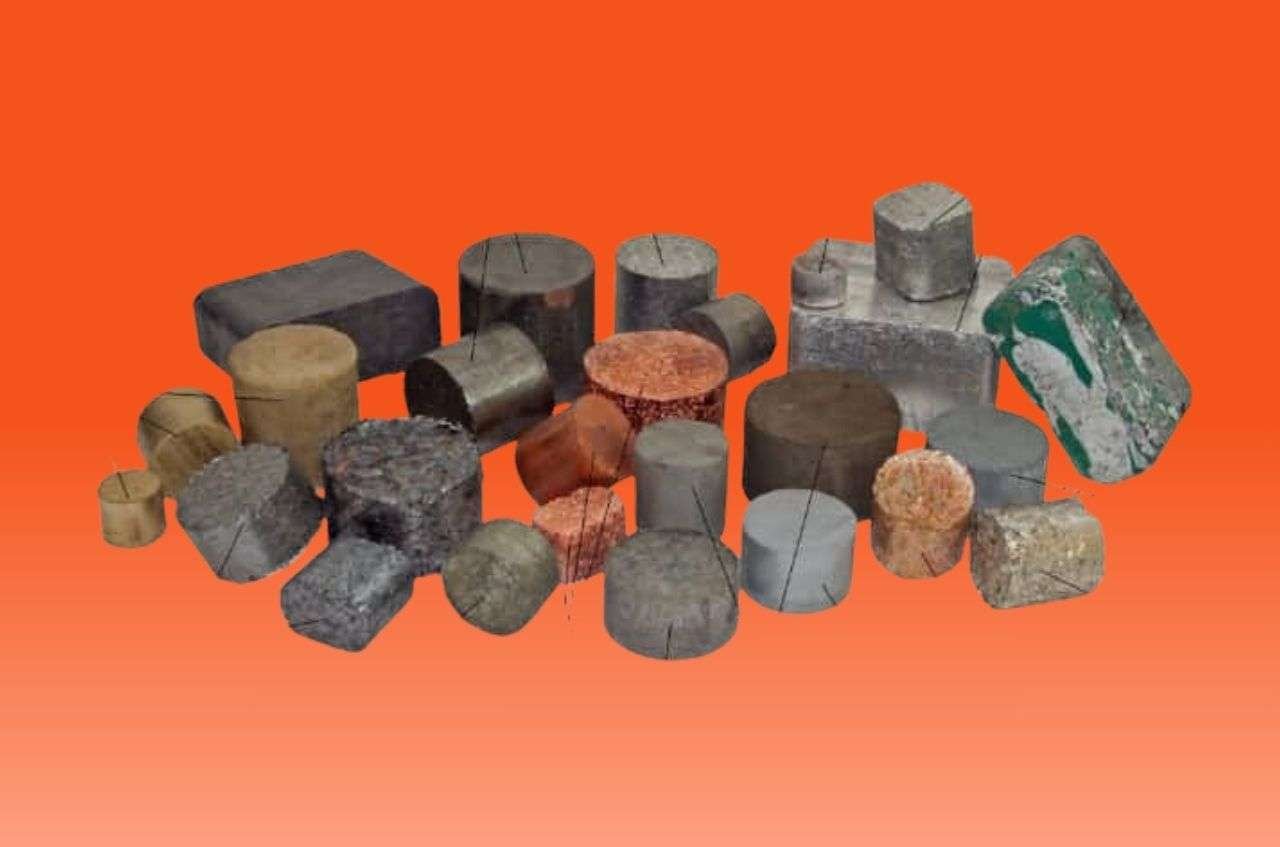What is the Softest Metal?
Want to know what is the softest metal? Uncover everything about the softest metal including softest metal properties, applications, appearance, and much more. Sounds exciting? Let’s dive right in to uncover facts!

Introduction to the Softest Metal in The World – Caesium/Cesium (Cs)
In the periodic table you will find Caesium as the softest metal. This is the fact as per Mohs hardness sclae. The symbol used to represent Caesium is Cs. It possesses an atomic number of 55. You can not question the level of softness the Caesim possess. You can take an idea about its softness as you can cut it solely with the knife. Apart from this its melting point is lower.
The temperature that is a little above the room temperature makes the Caesium transform into liquid. Caesium also the softest among the different alkalis such as sodium, francium, and even potassium.

The ionization potential of the Caesium is very low in comparison to the mercury, gallium, rubidium and francium. Caesium is alo a non-radioactive metal.
As per Bernic Lake scientist there is over 300,000 tons of ore exist lakebed in polluted form. Among this weight 20 percent of the weight belongs to Caesium.
There are over 39 isotopes when it comes to Caesium, it is among the second metal which have so many isotopes. But there is a fact among so many isotopes only one isotope Cs-133 refers to the naturally stable one. The remaining isotopes feature a half lives lies in the range of few seconds to few days. The istope name Cs-137 utilized in the atomic detonation as well as in nuclear power plants.
Highlights on Explosive Nature of Caesium
Caesium lies among those metals which are highly reactive. You can also refer Caesium as the heaviest alkali metal. Please note when the Caesium contacts water it becomes highly explosive.
The mixture of both results in the formulation of hydrogen gas. The thermal energy produced results in gas heating. Heat produced as a result ignites the mixture and leads to the explosion. The different hydrooxides present in the atmosphere may also contribute to the Caesium ignition.

Caesium can react explosively even with the cold water. It camn also react with the ice explosively when the temperature is above -116
0C.
Exploring Physical Properties of the Caesium
| Sr. No. |
Physical Property |
Value |
| 1 |
Melting Point |
28.50 Celsius |
| 2 |
Density |
1.93 gm/cm3 |
| 3 |
Ductility |
Can drawn into wires |
| 4 |
Electrical Conductivity |
5 × 106 S/m |
| 5 |
Boiling Point |
670.80 celsius |
| 6 |
Hardness |
0.2 mohs |
| 7 |
Structure |
Body centered cubic |
| 8 |
Thermal Expansion |
92.6 × 10-6 @ 200C |
| 9 |
Appearance |
Silvery gold with blue tint |
Scientific Insights on Caesium
| Sr. No. |
Physical Property |
Value |
| 1 |
Group |
1 |
| 2 |
Period |
6 |
| 3 |
Atomic Mass |
132.9 gmmol -1 |
| 4 |
Atomic Number |
55 |
| 5 |
Ionic Radius |
0.167 |
| 6 |
Isotopes |
12 |
| 7 |
Electronic shell |
[ Xe ] 6s1 |
| 8 |
Discovered by Fustov Kirchhoff in |
1860 |
Unvieling the History on Caesium
The history of Caesium can be traced to 1846 with Carl Plattner who analyzed the mineral pollucite which is caesium aluminium silicate. He could identify only ninety-three per cent of its components and exhausted the material shortly thereafter. In Plattner’s experiment he confused between caesium and sodium potassium.
Robert Bunsen collectively with Gustav Kirchhoff led to the discovery of Caesium in the year 1860. They analyzed samples of minerals collected from Durkheim and identified new spectral lines that suggested the existence of an unknown element. They obtained only 7 grams of caesium chloride but were unable to synthesize a metal sample.

Carl Theodor Setterberge at the University of Bonn was able to synthesize caesium using electrolysis of molten caesium cyanide (CsCN).
Caesium Step By Step Extraction and Production
You can obtain cesium, which is the softest metal on earth, as a coproduct during the extraction of lithium from pegmatite ores or pollucite ore through mining, mineral processing, and chemical separation.
Finding Caesium Deposits
Cesium deposits are usually associated with lithium deposits globally. Noteworthy examples include the Bikita pegmatite field in Zimbabwe, the Greenbushes Lithium mine in Australia, and the Tanco Mine in Canada. It is also obtained fro natural brine sources such as the Clayton Valley in Nevada.
Mining
The mining process will be extraction of cesium from pollucite ores. When miners locate cesium-rich residues, they use drills and explosives to remove the ore. The ore is crushed and processed to screened out unwanted elements leaving only the cesium bearing minerals. These are then treated to get cesium compounds such as chloride or hydroxide, and purification for high purity cesium.
Processing After Mining
Processing involves severe reduction in the particle size by utilising the grinding and crushing. Precipitation, flotation, and leaching helps in isolation of Caesium from other minerals. Continuing purification makes cesium products more suitable for various industries such as drilling fluids and atomic clocks.
Separating Chemically
Solvent extraction and ion exchange are the methods used to separate cesium chemically. Solvent extraction employs an organic solvent to selectively dissolve cesium, while ion exchange exchanges cesium ions with other ions in the solution. These techniques separate pure cesium compounds for quality cesium based products.
Compounds of Caesium
Cesium is involved in the formation of a number of compounds which possess different characteristics. Some examples include cesium chloride, which has a cubic crystal lattice structure employed in ultracentrifugation. Cesium compounds find its uses in chemistry, electronics, and in the medical field. Cesium iodide is used in scintillation detectors for radiation detecting purpose while another compound Cesium carbonate (Cs2CO3) is a base and organic synthesis catalyst.
Purification
Pollucite ore must be crushed and milled and leached with acid to dissolve cesium compounds. The solution goes through chemical processes such as precipitation and ion exchange chromatography. Aluminum is purified through recrystallization by eliminating impurities like sodium and potassium. The pure metal is obtained by the process of reduction at high temperatures with the help of calcium or lithium.
Recovering and Recycling
The recycling and recovering of cesium is important in preserving the resource for its use in the future. The process is used to recover cesium from spent nuclear fuel and industrial wastes and decreases the overall amount of waste and its detrimental effects on the environment. The approach guarantees that cesium offers its value to many industries without wasting scarce resources.
Where You Can Employ Caesium? – Softest Metal on Earth
Cesium is the softest metal in the world and therefore has several uses because of its distinctive characteristics. It can be seen in atomic clocks where vibrations help in measuring time. It is also, common in drilling muds used in the extraction of oil and gas. Its ability to respond to electromagnetic fields makes it useful in scientific research.
Nuclear Uses
Cesium plays an important role as a radiation source in cancer therapy. It is employed in nuclear reactor to regulate the fission process. It is useful in dating of archeological specimens and analyzing environmental changes. Due to its properties, cesium plays a critical role in technology and scientific development.
Medical and Chemical Usage
Cesium is an essential reagent that facilitates the formation of different substances in organic chemistry. Some of its derivatives are employed in cancer treatment to affect the cancerous tissue. These properties make cesium appropriate for many medical uses and help progress chemistry and healthcare.
Particle Separation
Cesium produces centrifugation fluids that are suitable for particle separation. Common working fluids are saline solutions, although their densities differ depending on the specific application. Getting the right fluids will provide the right results in biology and clinical diagnostics. Cesium fluids improve research and experimentation.
Electricity Generation
Cesium is used to generate electric power. It is also used in clean nuclear and renewable energy sources such as wind and solar. Electricity can be distributed through networks, power lines, and outlets using cesium.
Atomic Clocks
Cesium and rubidium atoms are used in atomic clocks to define seconds. These clocks are essential in GPS, telecommunication, and space research. Cesium guarantees accuracy to the level of one billionth of a second to make the world synchronize and innovate.
Exploration of Petrol
Cesium technology is employed by geologists to search for possible oil fields below the earth’s surface. This process is important to meet the global energy needs. Cesium assists in determining the appropriate place to drill and obtain petroleum products.
Space Uses
Cesium has applications in satellite telecommunications, navigation, meteorology and earth observation. The aforementioned technologies are significant for communication, weather monitoring, and GPS navigation.
Scientific Applications
Scientific research with cesium entails constructing theories, carrying out experiments, and analyzing results. It ranges from biology, physics, chemistry, and astronomy among other disciplines. Cesium research enhances the creation of new products and technologies.
Paramters That Influence Metal Softness
There are a number of parameters that can affect the softness of metals. Some of these properties include crystal structure and temperature that define the mechanical properties of the metal.
Metal Type
Different metals feature different level of softness regarding the level of ductility and malleability. For instance cesium, gold and silver can easily be molded into shapes. On the other hand steel and titanium are denser, stiffer and possess relatively higher hardness and lower ductility. Mechanical properties of metals depend on their atomic structure and the type of chemical bonds between the metal atoms.
Interstitial Atoms Existence
Interjacent atoms are situated in the gaps between the particles of the crystal lattice. These atoms may change the mechanical, electrical, and thermal characteristics of a metal. Some metals, when given hydrogen atoms, can improve their adsorption of hydrogen gas. How the interstitial atoms are positioned become very important in determining the suitability of the metal for a particular use.
Size of Grain
Grain size is defined as the size of the individual grains of the crystal in the material. Coarser grains give increased strength, and hardness while fine grains provide flexibility at a higher level. During heat treatment the grain size of the metal can be controlled by using processes such as annealing or quenching. This permits the customization of metals to certain standards.
Thermal Behavior
Thermal history involves all the changes that materials undergo in relation to temperature. It is especially important when considering a material and its potential functions and characteristics. Tempering at particular temperature can increase the toughness or hardness of the metal. On the other hand high temperatures have been known to result to thermal stresses and degradation.
Alloying and Impurities
It is for this reason that impurities can change the mechanical electrical and chemical characteristics of a metal. When you combine carbon and iron, then the end product called steel. You can employ doping control to add impurties by controlling them to a certain level. This can help you change the conductivity you want to experience. Knowledge about impurities make it possible to control metals such as cesium to meet specific purposes.
Structure of Crystals
You can refer it as the atom arrangement within the material. The shapes that crystals may have include hexagonal, tetragonal, and cubic. This arrangement influences the mechanical, thermal and electrical characteristics of metals. For instance, diamonds are hard because of their crystal structure while graphite has lubricating properties because of its layers.
Configuration of Electron
It defines as the electrons distribution within different orbits of an atom. Configuration of electrons also defines the behavior and characteristics of an element within chemical process. Knowledge of electron configurations assists in the understanding of bonding and formation of molecules. This knowledge is useful when it comes to the study of metals and their reactivity in chemical processes.
Bonding Strength
Metallic bonding strength refers to how tightly the atoms are held together within a solid structure. This bonding is accomplished through the mutual sharing of electrons with the positively charged atomic nuclei of a metal. The metallic bonds differ in strength depending on the type of metal in question. In general, metals with more valence electrons and smaller atomic size provide stronger bonds. This strength determines the ability of metals to melt and boil.
Size of Atom
The size reflects the space exist between the nucleus and the shell of electron. When you move down in a group the size goes up and it goes down within period. You can use it to access the reactivity, physical properties, and ability to chemical bonding. Knowledge of atomic size is essential in explaining the properties of metals.
Environmental and Health Consequences of Cesium
The softest metal on the Earth is cesium that may produce dangerous affects on health and environment. When cesium you ingest or inhale, it can result in nausea, diarrhea, heart and liver disease. Harmful effects that may result from cesium include that it may cause soil and water pollution through accidental discharge or inadequate disposal. This contamination can affect the food chain for years.
You need to take precautions while handling cesium because of its high reactivity. Proper disposal procedures ensure that wastes do not pollute the environment. Further studies are being conducted to determine the impact of cesium on human health in the long run. Scholars propose measures and policies to reduce dangers.
Difficulties in Managing Soft Metals
Working with such soft metals like cesium is sometimes challenging. Cesium is highly sensitive to moisture and air and tends to form oxide layers on the surface, which lowers its performance and purity. Specific facilities and handling measures you need for such work.
Soft metals are easily deformable and you can bend them into different shapes. Owing to their low hardness, they are easily deformed during processing. Another disadvantage of Cesium is its relatively low melting point, which means temperature stability in applications is important. Training and safety procedures you need to avoid mishaps at work.
Conclusion
Cesium is the softest metal known to man with very peculiar characteristics such as extreme softness and low melting point. It has its use in electronics and atomic physics. Go to Masion sheet metal fabrication to learn more about the uses of cesium. Learn how this astounding metal influences technology and innovation. Tap into the promise of soft metals with Sheet metal Masion now!

 The ionization potential of the Caesium is very low in comparison to the mercury, gallium, rubidium and francium. Caesium is alo a non-radioactive metal.
As per Bernic Lake scientist there is over 300,000 tons of ore exist lakebed in polluted form. Among this weight 20 percent of the weight belongs to Caesium.
There are over 39 isotopes when it comes to Caesium, it is among the second metal which have so many isotopes. But there is a fact among so many isotopes only one isotope Cs-133 refers to the naturally stable one. The remaining isotopes feature a half lives lies in the range of few seconds to few days. The istope name Cs-137 utilized in the atomic detonation as well as in nuclear power plants.
The ionization potential of the Caesium is very low in comparison to the mercury, gallium, rubidium and francium. Caesium is alo a non-radioactive metal.
As per Bernic Lake scientist there is over 300,000 tons of ore exist lakebed in polluted form. Among this weight 20 percent of the weight belongs to Caesium.
There are over 39 isotopes when it comes to Caesium, it is among the second metal which have so many isotopes. But there is a fact among so many isotopes only one isotope Cs-133 refers to the naturally stable one. The remaining isotopes feature a half lives lies in the range of few seconds to few days. The istope name Cs-137 utilized in the atomic detonation as well as in nuclear power plants.
 Caesium can react explosively even with the cold water. It camn also react with the ice explosively when the temperature is above -1160C.
Caesium can react explosively even with the cold water. It camn also react with the ice explosively when the temperature is above -1160C.
 Carl Theodor Setterberge at the University of Bonn was able to synthesize caesium using electrolysis of molten caesium cyanide (CsCN).
Carl Theodor Setterberge at the University of Bonn was able to synthesize caesium using electrolysis of molten caesium cyanide (CsCN).



